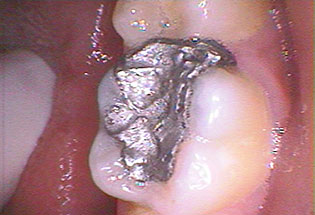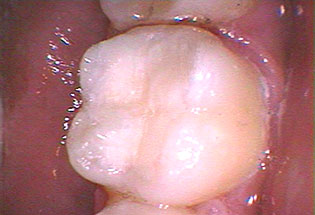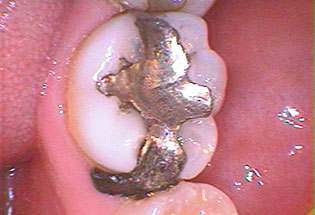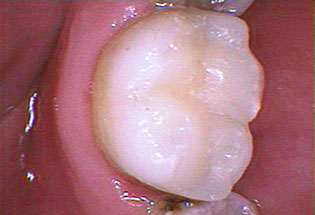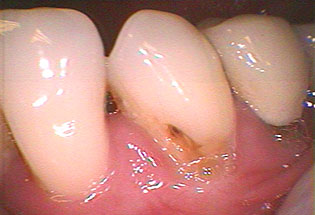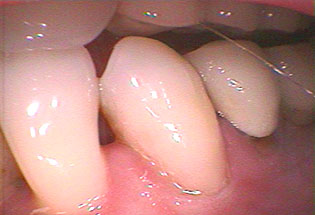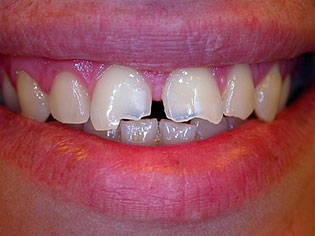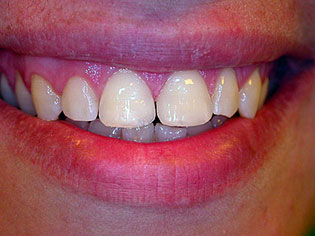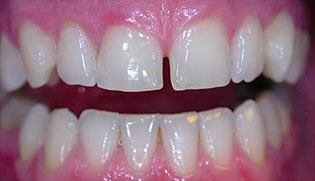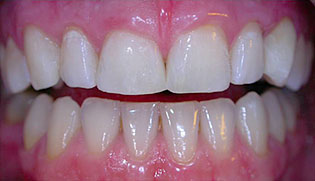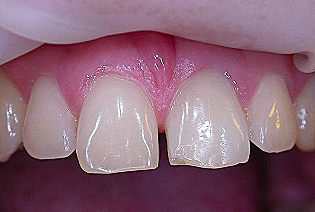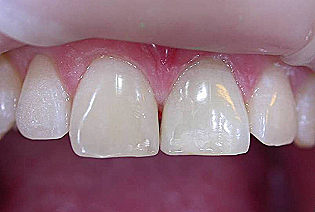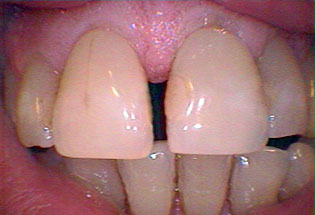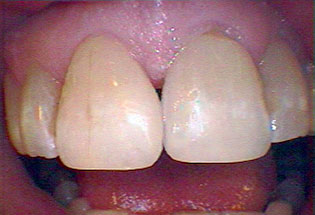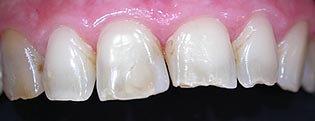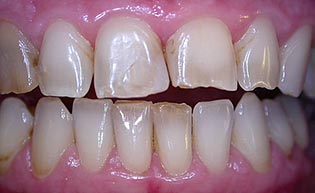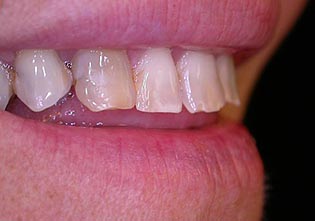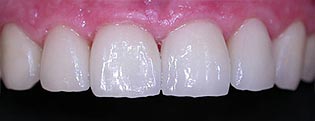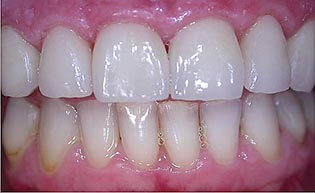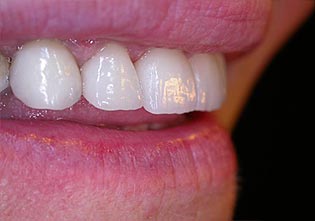TriDent Budapest, Hungary TREATMENTS AND CASE STUDIES
Treatments - case studies
Cosmetic Fillings & Laminates, Veneers - case studies
Cosmetic Fillings
There are alternative, natural-looking materials to conventional silver-colored fillings – materials made from porcelain and composite resins, which are colored to match natural tooth enamel. Unfortunately, few materials can match the strength and durability of dental amalgam and such, may need more frequent replacement. The most common amalgam alternatives are the composite fillings -- As stated, composite fillings are just what the name implies: a mixture of resins and fine particles designed to mimic the color of natural teeth. Composite fillings provide a pleasing aesthetic alternative. Composite resins are bonded to a tooth to allow for better adhesion.
Please see „Before and After” images below!
All the dental photographs, images and graphics are original materials performed and photographed by Dr. George Toth © TriDent Budapest.
Marginal lesion
Laminates (Bonding)
An alternative to veneers is a process called bonding, in which a tooth-coloured material that looks like the enamel of your teeth is molded and shaped, and then hardened and polished. Bonding can be used to improve the color of a tooth, or close unsightly gaps.
Bonding is generally not as permanent a process as veneers, and can be vulnerable to the same kind of staining your natural teeth are prone to. Bonding can also be more prone to chips and cracks than veneers.
Caps are generally preferred to bonding when such a procedure isn't deemed to be effective in the long run.
Veneers and laminates can also be used to close small gaps, when orthodontics (braces) are not suitable. If one tooth is slightly out of position, a veneer can sometimes be fitted to bring it into line with the others.
Veneers
In just two or three dental visits, a veneer can reverse years of stains caused by foods, caffeine and tobacco use. Special veneers can also be used to correct discoloured, worn down, cracked and chipped teeth. Veneers can also be used to close unsightly gaps between teeth. Stronger types of veneers made of porcelain, also called ceramic veneers, typically last longer because they are bonded to the tooth.
An impression of the tooth must be taken and a veneer molded by a lab technician. Because veneers require a small amount of enamel to be removed, they are permanent and non-reversible.
The process involves buffing the tooth, removing an extremely thin layer of the tooth to allow for the thickness of the veneer, an impression of the tooth, and final bonding of the veneer to the tooth with special cement. A special light is used to complete the process.
What is a Veneer?
A veneer is a thin layer of porcelain made to fit over the front surface of a tooth, like a false fingernail fits over a nail. Sometimes a natural colour ‘composite’ material is used instead of porcelain.
Veneers can improve the colour, shape and position of your teeth. A precise shade of porcelain can be chosen to give the right colour to improve a single discoloured or stained tooth or to lighten front teeth (usually the upper ones) generally.
A veneer can make a chipped tooth look intact again. The porcelain covers the whole of the front of the tooth with a thicker section replacing the broken part.
TriDent Budapest is a Certified LUMINEERS Dentistry.
LUMINEERS are special veneers: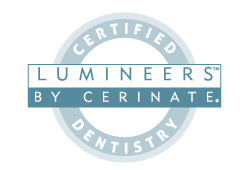
- as thin as a contact lens (0,3 mm), made in USA
- NO shots , NO drilling needed (most cases)
- the Reversible, Painless Smile Makeover
CONTACT TriDent for a LUMINEERS consultation!

Veneers make teeth look natural and healthy. Because they are very thin and are held in place by a special strong bond (rather like super-glue) very little preparation of the tooth is needed.

